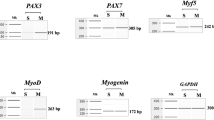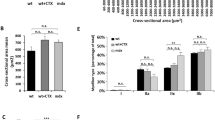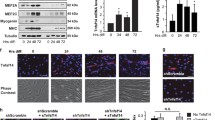Abstract.
The generation of human myogenic cell lines could potentially provide a valuable source for cell transplantation in myopathies. The dysregulation of proliferative-differentiative signals by viral oncogenes can result in the induction of apoptosis. Whether apoptosis occurred in myogenic cells expressing large T antigen (Tag) from SV40 upon differentiation was unknown. Human muscle satellite cells were transfected with two different constructs, containing either an origin-defective SV40 genome or Tag under vimentin promoter control. When differentiation was triggered, Tag expression reduced the formation of myotubes and dead cells showing apoptotic features were present. However, the cells expressing SV40 Tag under vimentin promoter control retained their capacity to form myotubes and expressed the myofibrillar proteins as myosin heavy chain and dystrophin when Tag expression was silent. Their apoptotic rate was similar to that of untransfected cells. The observation that apoptosis can be prevented by the down-regulation of Tag suggests that the programmed cell death induced in transformed cells can be reversed, and confirms the regulatory efficiency of the human vimentin promoter.
Similar content being viewed by others
Author information
Authors and Affiliations
Additional information
Received 24 July 2000; revised 18 October 2000; accepted 9 November 2000
Rights and permissions
About this article
Cite this article
Corti*, S., Salani, S., Del Bo, R. et al. T-antigen regulated expression reduces apoptosis of Tag-transformed human myoblasts . CMLS, Cell. Mol. Life Sci. 58, 135–140 (2001). https://doi.org/10.1007/PL00000773
Issue Date:
DOI: https://doi.org/10.1007/PL00000773




